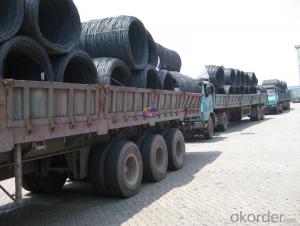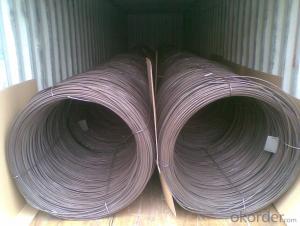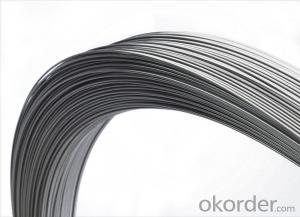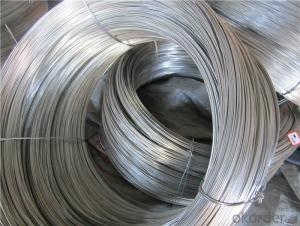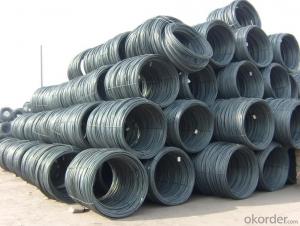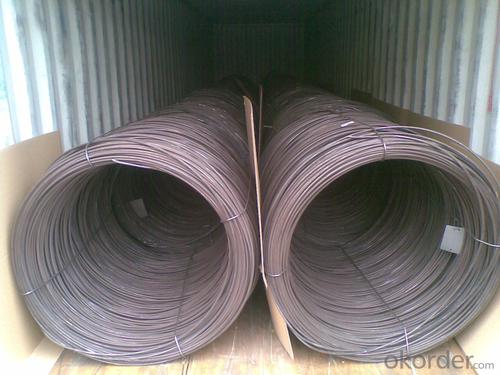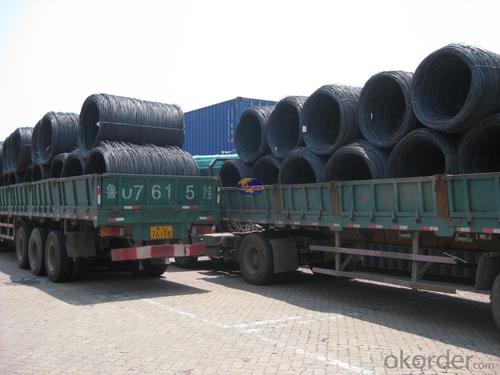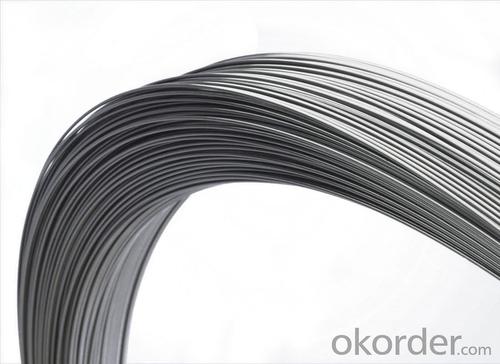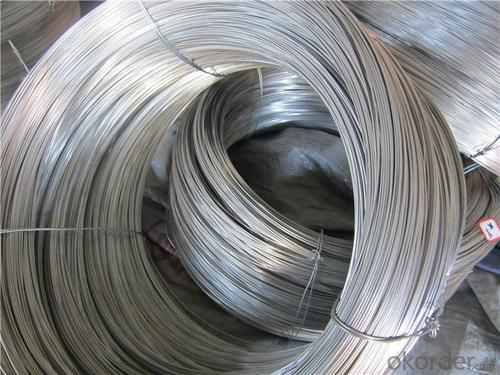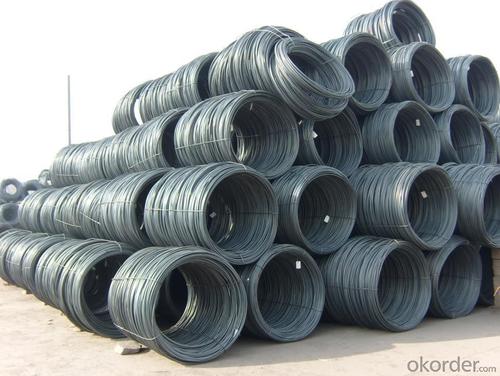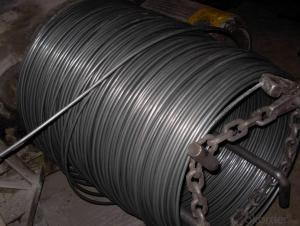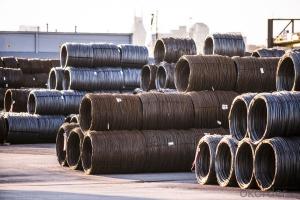SAE1006Cr Carbon Steel Wire Rod 16mm for Welding
- Loading Port:
- Shanghai
- Payment Terms:
- TT OR LC
- Min Order Qty:
- 100 m.t
- Supply Capability:
- 30000 m.t/month
OKorder Service Pledge
OKorder Financial Service
You Might Also Like
Specification
Description of SAE1006Cr Carbon Steel Wire Rod 16mm for Welding:
OKorder is offering Color Coated Steel Coil Prepainted Steel Coil at great prices with worldwide shipping. Our supplier is a world-class manufacturer of steel, with our products utilized the world over. OKorder annually supplies products to European, North American and Asian markets. We provide quotations within 24 hours of receiving an inquiry and guarantee competitive prices.
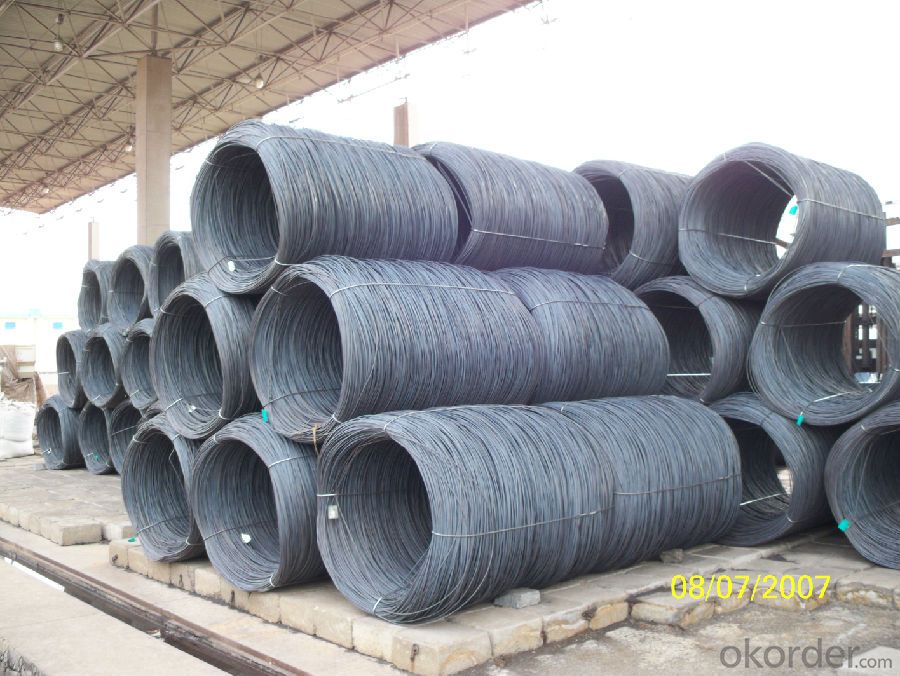
Applications of SAE1006Cr Carbon Steel Wire Rod 16mm for Welding:
Color Coated Steel Coil Prepainted Steel Coil are ideal for structural applications and are widely used in the construction of buildings and bridges, and the manufacturing, petrochemical, and transportation industries.
Main Product Features of SAE1006Cr Carbon Steel Wire Rod 16mm for Welding:
· Premium quality
· Prompt delivery & seaworthy packing (30 days after receiving deposit)
· Corrosion resistance
· Can be recycled and reused
· Mill test certification
· Professional Service
· Competitive pricing
Specifications of SAE1006Cr Carbon Steel Wire Rod 16mm for Welding:
1, Introduction: Color coated steel coils(sheets), i. E. PPGI, also called prepainted steel coils(sheets), are made of galvanized steel coils(sheets) with polymer coatings as surface. It's a new enclosure material and building board with characteristics of light-weighted, heat preserved&insulated, easily installed with bright colors.
2, Production Process: Pretreatment(Degreasing)_Drying_Chromating_Paint Basic Oil_Cooling_Drying_Color Coating_Cooling_Film-covering_Rolling Up
3, Characteristics:
Good at corrosion resistence. Besides zinc coating of the basic plate of galvanized steel sheet, the color coating as the surface has double lifetime to ensure better anticorrosion effect.
With excellent cold bending molded manufacturablity, PPGI products can be processed or directly used as final product. As being light-weighted and conveniently transported, they're widly used to replace wood to save energy.
4.There're thousands of colors can be chosen as per different application. Any color plays well in decoration.
No pollution with high recycling rate, PPGI coils and sheets are strongly recommended as enviroment-friendly products by the government.
5, eye bands and 4 circumferential bands in steel, galvanized metal fluted rings on inner and outer edges, galvanized.
| commodity | SAE1006Cr Carbon Steel Wire Rod 16mm for Welding |
| Techinical Standard: | JIS G3302-1998, EN10142/10137, ASTM A755 |
| grade | Q195,Q215,Q235,SAE1006,SAE1008 SAE1006Cr |
| Types: | Mesh welding |
| Base metal | galvanized, galvalume, cold rolled steel |
| Thickness | 0.14-1.0mm(0.16-0.8mm is the most advantage thickness) |
| Width | 610/724/820/914/1000/1200/1219/1220/1250mm |
| Type of coating: | PE, SMP, PVDF |
| Zinc coating | Z60-150g/m2 or AZ40-100g/m2 |
| Top painting: | 5 mic. Primer + 15 mc. R. M. P. |
| Back painting: | 5-7 mic. EP |
| Color: | According to RAL standard |
| ID coil | 508mm610mm |
| Coil weight: | 2--3MT |
| Package: | Properly packed for ocean freight exportation in 20'containers |
| Application: | Industrial panels, roofing and siding for painting/automobile |
| Price terms | FOB, CFR, CIF |
| Payment terms | 20%TT in advance+80% TT or irrevocable 80%L/C at sight |
| delivery time | 25 days after recepit of 20% TT |
| Remarks | Insurance is all risks |
| MTC 3.1 will be handed on with shipping documents | |
| We accept SGS certificatation test |
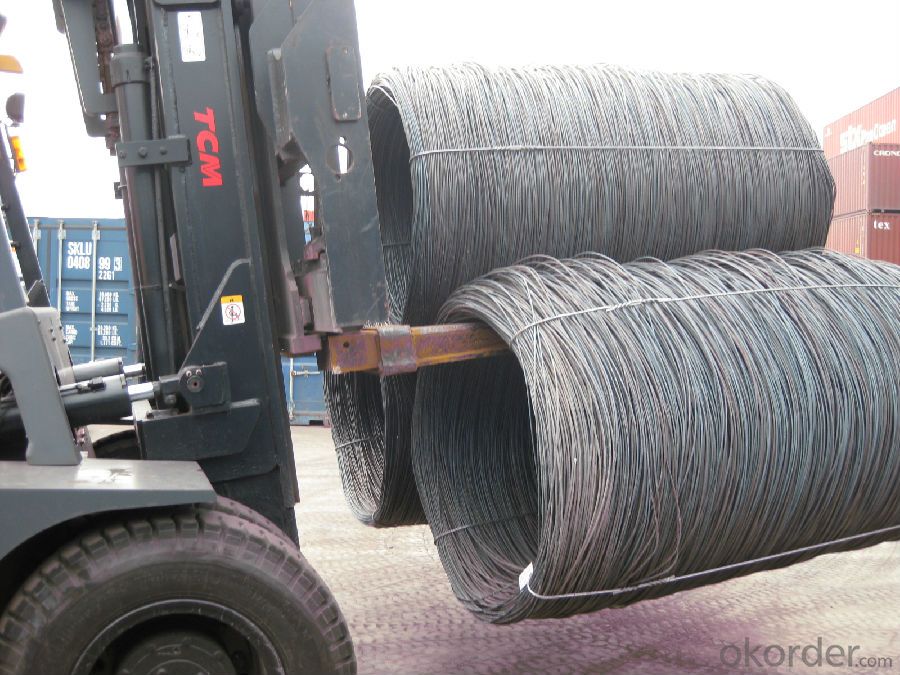
FAQ of SAE1006Cr Carbon Steel Wire Rod 16mm for Welding:
Q1: Why buy Materials & Equipment from OKorder.com?
A1: All products offered byOKorder.com are carefully selected from China's most reliable manufacturing enterprises. Through its ISO certifications, OKorder.com adheres to the highest standards and a commitment to supply chain safety and customer satisfaction.
Q2: How do we guarantee the quality of our products?
A2: We have established an advanced quality management system which conducts strict quality tests at every step, from raw materials to the final product. At the same time, we provide extensive follow-up service assurances as required.
Q3: How soon can we receive the product after purchase?
A3: Within three days of placing an order, we will begin production. The specific shipping date is dependent upon international and government factors, but is typically 7 to 10 workdays.
Q4: What makes stainless steel stainless?
A4: Stainless steel must contain at least 10.5 % chromium. It is this element that reacts with the oxygen in the air to form a complex chrome-oxide surface layer that is invisible but strong enough to prevent further oxygen from "staining" (rusting) the surface. Higher levels of chromium and the addition of other alloying elements such as nickel and molybdenum enhance this surface layer and improve the corrosion resistance of the stainless material.
Q5: Can stainless steel rust?
A5: Stainless does not "rust" as you think of regular steel rusting with a red oxide on the surface that flakes off. If you see red rust it is probably due to some iron particles that have contaminated the surface of the stainless steel and it is these iron particles that are rusting. Look at the source of the rusting and see if you can remove it from the surface.
- Q: What are the common heat treatment processes for steel wire rod?
- The common heat treatment processes for steel wire rod include annealing, normalizing, quenching, and tempering.
- Q: What are the different surface finishes of steel wire rod available?
- Some of the different surface finishes of steel wire rod available include black, galvanized, and coated finishes.
- Q: How is steel wire rod used in the manufacturing of wire forms for HVAC systems?
- Steel wire rod is an essential component in the manufacturing of wire forms for HVAC systems. These wire forms are key elements that provide structural support and stability to the HVAC system. Firstly, steel wire rod is used to produce the actual wire used in wire forms. The rod is typically made of high-quality steel, which ensures the wire's strength and durability. The rod is then processed through various manufacturing techniques such as drawing, annealing, and coating to create the desired wire diameter and properties. Once the wire is formed, it can be utilized in different ways within HVAC systems. For instance, it can be used to create wire forms that are used as support structures for air ducts. These wire forms provide a sturdy framework that maintains the shape and integrity of the ductwork. Additionally, steel wire rod can be used to manufacture wire forms that act as reinforcement for HVAC components. For example, it can be used to create wire grids that are placed behind air filters to enhance their structural stability and prevent them from collapsing under pressure. Wire forms made from steel wire rod can also be used as fasteners or connectors within HVAC systems. They can be shaped into hooks, clips, or springs that hold various components together, ensuring a secure and reliable connection. The use of steel wire rod in the manufacturing of wire forms for HVAC systems provides several benefits. Steel is known for its strength and durability, making it an ideal material for withstanding the harsh conditions often encountered in HVAC applications. It also has excellent corrosion resistance, ensuring the longevity of the wire forms in different environments. In conclusion, steel wire rod is an indispensable material in the manufacturing of wire forms for HVAC systems. Its strength, durability, and versatility make it a suitable choice for creating wire forms that provide structural support, reinforcement, and fastening mechanisms within HVAC systems.
- Q: What are the common production processes for low carbon steel wire rod?
- The common production processes for low carbon steel wire rod include heating and melting the steel, followed by continuous casting to form billets. These billets are then rolled into wire rod through a series of hot rolling, cooling, and finishing processes. The wire rod is typically coiled and may undergo additional treatments like drawing, annealing, and surface coating before it is used in various applications.
- Q: How is steel wire rod classified based on its strength?
- The strength of steel wire rod is determined by a grading system called the grade or grade number. This grade number indicates the maximum stress the wire rod can handle before breaking, which is known as its tensile strength. The wire rod becomes stronger as the grade number increases. Steel wire rod is classified based on its strength, with grades ranging from 1000 to 4000. Grade 1000 wire rod has the lowest tensile strength, usually around 1000 MPa, while grade 4000 wire rod has the highest tensile strength, typically around 4000 MPa. Different grades of wire rod are designed for specific industries and applications. Lower grade wire rods are suitable for less demanding tasks like general construction, fencing, and mesh manufacturing. These applications don't require high strength. On the other hand, higher grade wire rods are used in industries that require exceptional strength, such as automotive, aerospace, and the manufacturing of high-tensile steel cables. These wire rods are engineered to withstand extreme forces and are used in critical applications that demand superior strength and performance. In addition to tensile strength, steel wire rod can also be classified based on other properties, including ductility, corrosion resistance, and formability. These properties are crucial in determining the suitability of the wire rod for specific applications. Overall, the classification of steel wire rod based on its strength is vital in choosing the right material for different applications. It enables engineers and manufacturers to select wire rods that can handle the required forces and perform optimally in their respective industries.
- Q: What are the strength requirements for steel wire rod used in suspension bridge wire strands?
- The strength criteria for steel wire rod utilized in the wire strands of suspension bridges can differ based on various factors. Typically, the wire rod must possess a high level of tensile strength to endure the immense loads and stresses that suspension bridges encounter. The wire rod must have a minimum yield strength and ultimate tensile strength that either meets or surpasses the design requirements for the suspension bridge. The yield strength signifies the amount of stress that the wire rod can tolerate before it permanently deforms, while the ultimate tensile strength indicates the maximum stress the wire rod can withstand before it breaks. In addition to high strength, the wire rod must also demonstrate good ductility and toughness. Ductility refers to the material's ability to deform without fracturing, while toughness is its capacity to absorb energy without fracturing. These properties are vital for maintaining the structural integrity of the wire strands, as they allow the strands to flex and absorb dynamic loads, such as wind or vehicle vibrations, without experiencing failure. Furthermore, the wire rod should possess excellent corrosion resistance to ensure the longevity and durability of the suspension bridge. Over time, corrosion can weaken the wire strands, which compromises the bridge's structural integrity. Therefore, the wire rod must have a protective coating or be composed of corrosion-resistant alloys that can withstand exposure to environmental factors like moisture, saltwater, and pollutants. Lastly, the wire rod's dimensional requirements, including its diameter and surface finish, must also adhere to the specifications of the suspension bridge design. These dimensions are crucial for maintaining the desired strength and performance characteristics of the wire strands. In conclusion, the strength requirements for steel wire rod used in suspension bridge wire strands encompass high tensile strength, good ductility, toughness, corrosion resistance, and compliance with dimensional specifications. By meeting these requirements, the wire strands are capable of withstanding the significant loads and environmental conditions experienced by suspension bridges, ensuring their structural integrity and safety.
- Q: How is steel wire rod tested for straightness?
- Steel wire rod is tested for straightness using various methods. One common method is the visual inspection, where the rod is visually examined for any bends or curves. Another method is the use of a straightening machine, which applies pressure and force to straighten any bends in the wire rod. Additionally, specialized instruments such as straightness testers or laser-guided systems can be used to measure and verify the straightness of the steel wire rod accurately.
- Q: What are the different types of steel wire rod finishes for improved corrosion resistance?
- There are several types of steel wire rod finishes that can enhance corrosion resistance, including galvanized, stainless steel, and zinc-coated finishes. Galvanized finishes involve applying a layer of zinc to the surface of the wire rod, providing a protective barrier against rust and corrosion. Stainless steel finishes are highly resistant to corrosion due to their chromium content, which forms a passive layer on the surface. Zinc-coated finishes, also known as zinc electroplating, involve applying a thin layer of zinc onto the wire rod, providing excellent corrosion resistance.
- Q: What are the different types of surface defects that can occur on steel wire rod?
- There are several types of surface defects that can occur on steel wire rods, including scale, pits, scratches, cracks, and surface decarburization. These defects can affect the quality and performance of the wire rod, and they need to be carefully inspected and addressed to ensure the reliability and durability of the final product.
- Q: How is steel wire rod used in the manufacturing of wire for automotive airbags?
- Steel wire rod is an essential component in the manufacturing process of wire for automotive airbags. The wire rod serves as the raw material that is transformed into the final wire used in the airbag system. Firstly, the steel wire rod goes through a series of processes to enhance its properties and make it suitable for airbag wire manufacturing. These processes include cleaning, heating, and shaping the rod into the desired diameter and shape. The rod may also undergo surface treatments to improve its corrosion resistance and strength. Once the rod is prepared, it is then drawn through a series of dies to reduce its diameter and increase its length. This process, known as wire drawing, significantly improves the wire's strength and flexibility. The wire is typically drawn several times to achieve the required diameter and mechanical properties. After the wire drawing process, the wire is further processed to ensure it meets the specific requirements of automotive airbags. It may undergo additional heat treatments to enhance its strength and ductility, making it capable of withstanding the forces exerted during airbag deployment. The final wire produced from the steel wire rod is then used in the fabrication of the airbag system. The wire is typically woven or knitted to form a strong and flexible fabric that can expand rapidly upon airbag deployment. This fabric is then incorporated into the airbag module, which also includes other components such as the inflator and cushion. Overall, steel wire rod plays a crucial role in the manufacturing of wire for automotive airbags. It provides the raw material that is processed and transformed into the final wire, which is strong, flexible, and capable of effectively protecting occupants in the event of a collision.
Send your message to us
SAE1006Cr Carbon Steel Wire Rod 16mm for Welding
- Loading Port:
- Shanghai
- Payment Terms:
- TT OR LC
- Min Order Qty:
- 100 m.t
- Supply Capability:
- 30000 m.t/month
OKorder Service Pledge
OKorder Financial Service
Similar products
Hot products
Hot Searches
Related keywords
